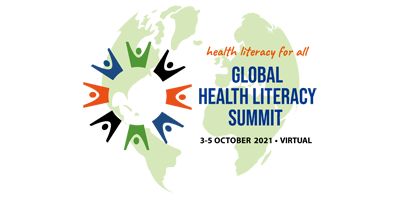Abstract Preview
Abstract
|
Title Health literacy profile of Brazilian regions: a cross-sectional survey using the Health Literacy Questionnaire - Brazilian version (HLQ-Br) |
|
Type Poster Presentation Only |
|
Theme Global Health Literacy Summit 2021 |
|
Topic Health literacy and clinical healthcare settings (incl primary care) |
Authors
|
Main Author Katarinne Moraes1 |
|
Presenting Author Katarinne Moraes1 |
|
Co-Author Virginia Visconde Brasil2 Helena Alves de Carvalho Sampaio4 Fábio Luiz Mialhe5 Luiz Antonio Brasil6 Flaviane Cristina Rocha César2 Lizete Malagoni de Almeida Cavalcante Oliveira2 Vanessa da Silva Carvalho Vila3 |
Authors' Institution
|
Department / Institution / Country Nursing / Universidade Federal de Jataí / Brazil (Brasil)1 Nursing / Universidade Federal de Goiás / Brazil (Brasil)2 Nursing / Pontifícia Universidade Católica de Goiás / Brazil (Brasil)3 Nutrition / Universidade Estadual do Ceará / Brazil (Brasil)4 Dentistry / Universidade Estadual de Campinas / Brazil (Brasil)5 Medicine / Universidade Federal de Goiás / Brazil (Brasil)6 |
|
Abstract Content (abstracts should be written in Size 11 font, Arial font style) Background: health literacy is a key determinat of health in populations living in low-income countries. We need to know and understand it to improve health promotion and reduce health inequities. Identify health literacy conditions in Brazil will increase understanding of how HL influences health inequity in the country. Objective: determine the health literacy profile of Brazilian adults in three different regions of country. Methods: a cross-sectional survey was conducted with 794 adults in three of the five regions of Brazil in 2017. Health literacy was assessed using the Health Literacy Questionnaire - Brazilian version. Socio-demographic and clinical variable were collected. Data were analyzed using descriptive statistics, Kruskal-Wallis Test for comparation into regions and Spearman Correlation Coefficient to explore the relationship between population characteristics and health literacy. Results: mean age of respondents was 53.07 (range 18-94) years and more than 50% of them had less than nine years of schooling. Household income of up to two minimum salaries was prevalent and most of them lived with someone else. The lowest HLQ-Br scale scores were “Appraisal of health information” 2.68 (95% CI: 2.64; 2.73) and “Navigating the healthcare system” 3.06 (95% CI: 3.0; 3.12). There was a significant difference in the performance of all HLQ scales when compared by region of the country and the northeast region had the lowest. In all three regions of the country age, family income and years of education were negatively correlated in the scales “Navigating the healthcare system”; “Ability to find good health information” and “Understand health information well enough to know what to do”. Conclusions: the study showed that navigation across the Brazilian healthcare system and the ability to find and understand health information are critical aspects of health literacy, especially considering the old age, low family income and low years of schooling. These results provide some practical guidance in developing interventions and the necessity of better communications between the population and healthcare workers in the Brazilian Health Attention Network. |
Requires Audio or Video system for Presentation?: No
